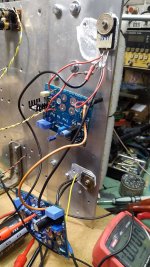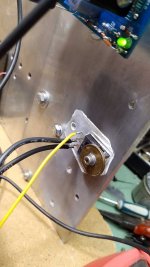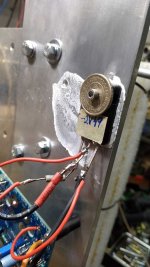same , 4R load graphs
Attachments
-
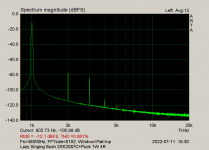 Lazy Singing Bush 2SK2087C+Puck 1W 4R.png34.6 KB · Views: 115
Lazy Singing Bush 2SK2087C+Puck 1W 4R.png34.6 KB · Views: 115 -
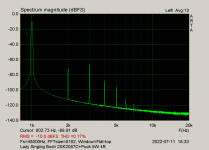 Lazy Singing Bush 2SK2087C+Puck 5W 4R.png35 KB · Views: 110
Lazy Singing Bush 2SK2087C+Puck 5W 4R.png35 KB · Views: 110 -
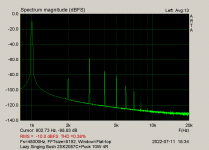 Lazy Singing Bush 2SK2087C+Puck 10W 4R.png35.4 KB · Views: 112
Lazy Singing Bush 2SK2087C+Puck 10W 4R.png35.4 KB · Views: 112 -
 Lazy Singing Bush 2SK2087C+Puck 15W 4R.png36.6 KB · Views: 105
Lazy Singing Bush 2SK2087C+Puck 15W 4R.png36.6 KB · Views: 105 -
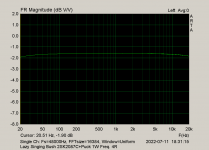 Lazy Singing Bush 2SK2087C+Puck Freq. 4R.png47.3 KB · Views: 106
Lazy Singing Bush 2SK2087C+Puck Freq. 4R.png47.3 KB · Views: 106 -
 Lazy Singing Bush 2SK2087C+Puck THD vs. Freq. 4R.png49.3 KB · Views: 103
Lazy Singing Bush 2SK2087C+Puck THD vs. Freq. 4R.png49.3 KB · Views: 103
same, 8R load graphs
Attachments
-
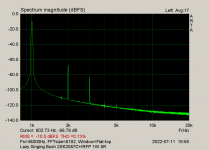 Lazy Singing Bush 2SK2087C+IRFP 1W 8R.png7.6 KB · Views: 134
Lazy Singing Bush 2SK2087C+IRFP 1W 8R.png7.6 KB · Views: 134 -
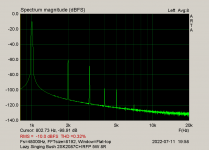 Lazy Singing Bush 2SK2087C+IRFP 5W 8R.png35.5 KB · Views: 132
Lazy Singing Bush 2SK2087C+IRFP 5W 8R.png35.5 KB · Views: 132 -
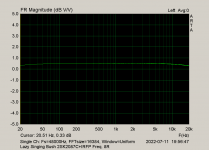 Lazy Singing Bush 2SK2087C+IRFP Freq. 8R.png47.3 KB · Views: 116
Lazy Singing Bush 2SK2087C+IRFP Freq. 8R.png47.3 KB · Views: 116 -
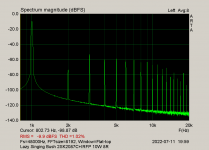 Lazy Singing Bush 2SK2087C+IRFP 10W 8R.png40.1 KB · Views: 119
Lazy Singing Bush 2SK2087C+IRFP 10W 8R.png40.1 KB · Views: 119 -
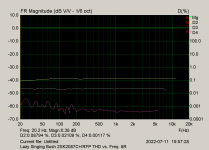 Lazy Singing Bush 2SK2087C+IRFP THD vs. Freq. 8R.png49.9 KB · Views: 129
Lazy Singing Bush 2SK2087C+IRFP THD vs. Freq. 8R.png49.9 KB · Views: 129
same, 4R load graphs
Attachments
-
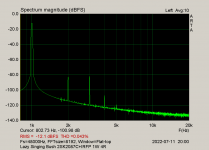 Lazy Singing Bush 2SK2087C+IRFP 1W 4R.png7.8 KB · Views: 102
Lazy Singing Bush 2SK2087C+IRFP 1W 4R.png7.8 KB · Views: 102 -
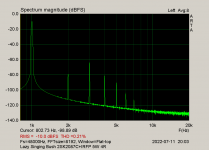 Lazy Singing Bush 2SK2087C+IRFP 5W 4R.png35.7 KB · Views: 104
Lazy Singing Bush 2SK2087C+IRFP 5W 4R.png35.7 KB · Views: 104 -
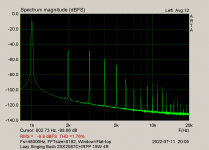 Lazy Singing Bush 2SK2087C+IRFP 15W 4R.png38 KB · Views: 100
Lazy Singing Bush 2SK2087C+IRFP 15W 4R.png38 KB · Views: 100 -
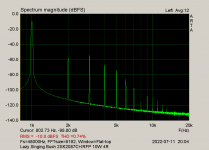 Lazy Singing Bush 2SK2087C+IRFP 10W 4R.png7.7 KB · Views: 97
Lazy Singing Bush 2SK2087C+IRFP 10W 4R.png7.7 KB · Views: 97 -
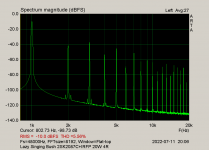 Lazy Singing Bush 2SK2087C+IRFP 20W 4R.png41.5 KB · Views: 106
Lazy Singing Bush 2SK2087C+IRFP 20W 4R.png41.5 KB · Views: 106 -
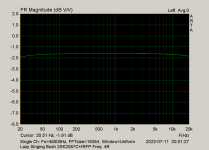 Lazy Singing Bush 2SK2087C+IRFP Freq. 4R.png47.2 KB · Views: 93
Lazy Singing Bush 2SK2087C+IRFP Freq. 4R.png47.2 KB · Views: 93 -
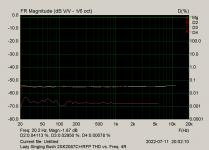 Lazy Singing Bush 2SK2087C+IRFP THD vs. Freq. 4R.png49.3 KB · Views: 103
Lazy Singing Bush 2SK2087C+IRFP THD vs. Freq. 4R.png49.3 KB · Views: 103
......... How about a standalone frontend to drive it?
pretty low on my list
major obstacle is - deciding how much parts selection can be exclusive?
if Lundahl Iron is allowed, it can be done in short time
if strict Paesano parts choice is allowed, I'm still waiting for crystallization particle

I really like my Sony VFET 2SK79 preamp for driving my followers. It has a reasonable amount of second harmonic distortion, similar to the Luminaria, but can output enough voltage for 50W at 8R. For less sugar, the BA-3 preamp also outputs enough voltage and then there is also ra7's latest Schade Common Gate preamp.
Lundahl is allowed, you may proceed…pretty low on my list
major obstacle is - deciding how much parts selection can be exclusive?
if Lundahl Iron is allowed, it can be done in short time
if strict Paesano parts choice is allowed, I'm still waiting for crystallization particle

Following Ben Mah's findings, about 3:2 Mu resistors ratio, and counting that same applies to 2SK2087C, be it combined with puck or IRFP, that would be 3*1R2/3W MOX at Mu MOS Source side, and 3*0R82/3W MOX at SIT sideNow, as I promised - play with 2SK2087C
......
Iq decreased to 2A; did that prior to reading Ben's post, so for my tests I did stay at 1:1 ratio of resistor groups , decreasing them to 0R33 (3*1R in parallel); easy to recalculate to 3:2 ratio
.....
so, 400mR + 273mR
resulting in sum of 673mR, pretty close to desired sum of 666mR
clearer:
R5,7,9 being 1R2/3W MOX
R4,6,8 being 0R82/3W MOX
Is this an evolution of the SINGING BUSH or another flavor?
I see the input buffer is four instead of six FETs and the LM317 is no longer used along with things moving about.
ZM, do you consider this an improvement of SINGING BUSH or just a simplification?
Is it a change worth making?
I see the input buffer is four instead of six FETs and the LM317 is no longer used along with things moving about.
ZM, do you consider this an improvement of SINGING BUSH or just a simplification?
Is it a change worth making?
Aha!
Cody, what do you see is the advantage in needing another stage in the chain?
Is this for people who already have powerful line stages?
Cody, what do you see is the advantage in needing another stage in the chain?
Is this for people who already have powerful line stages?
The Singing Bush is a Common source amplifier, giving both voltage and current gain, hence only a buffer up front to help drive the gate of the SIT (largish input capacitance). The Lazy Singing bush is a common drain (follower) amplifier, providing only current gain. The advantage is less distortion, at the cost of no voltage gain. So, you can have your choice of how you want to provide that voltage gain – you could wire up a line transformer/autoformer (like M2, SissySIT, etc), or you could just use a linestage with the necessary cojones. BA3 is always suggested as a perfect example of this. Ben also shared his 2SK79 linestage earlier, which can do the job.
I love my Singing Bush, but am also very excited to try the same parts in a common drain amp (like Lazy SB). The SIT follower I have experience with is the recent Sony lottery amp, and it had a nice sense of clarity/lucidity that I don't necessarily get with my other amps. That said, adjusting the mu resistors in the original Singing Bush can give me something closer to that sound.
I love my Singing Bush, but am also very excited to try the same parts in a common drain amp (like Lazy SB). The SIT follower I have experience with is the recent Sony lottery amp, and it had a nice sense of clarity/lucidity that I don't necessarily get with my other amps. That said, adjusting the mu resistors in the original Singing Bush can give me something closer to that sound.
But the question is: is there still room on Codys list to accomodate all of Mightys brain children?The Singing Bush is a Common source amplifier, giving both voltage and current gain, hence only a buffer up front to help drive the gate of the SIT (largish input capacitance). The Lazy Singing bush is a common drain (follower) amplifier, providing only current gain. The advantage is less distortion, at the cost of no voltage gain. So, you can have your choice of how you want to provide that voltage gain – you could wire up a line transformer/autoformer (like M2, SissySIT, etc), or you could just use a linestage with the necessary cojones. BA3 is always suggested as a perfect example of this. Ben also shared his 2SK79 linestage earlier, which can do the job.
I love my Singing Bush, but am also very excited to try the same parts in a common drain amp (like Lazy SB). The SIT follower I have experience with is the recent Sony lottery amp, and it had a nice sense of clarity/lucidity that I don't necessarily get with my other amps. That said, adjusting the mu resistors in the original Singing Bush can give me something closer to that sound.

And: wazzup with the birth rate? Schlivo induced or plain mighty+cofee magic?
Oh, I should also point out that I don't make additions to The ZM List™ until there's an official ZM post, with explanations, etc.
"Link porn or didn't happen" I always say
Now, back to Lazy SB....
"Link porn or didn't happen" I always say

Now, back to Lazy SB....
Thanks, Cody, for that clear explanation.
I think I will remain with my current level of complication before adding even more!
I think I will remain with my current level of complication before adding even more!
ZM, should there be a resistor from drain to ground for a Schade MOS? It might be there because your measurements for Schaded MOS are different than pure MOS. It is also there on the Warbler schematic.

I’m trying to learn the biasing scheme for the 2sk2087c from your many designs!!! Trying to use an LND150 CCS to develop a stable reference voltage. It needs a gate to ground “grid-leak” type resistor but then it is rock steady.
I’m trying to learn the biasing scheme for the 2sk2087c from your many designs!!! Trying to use an LND150 CCS to develop a stable reference voltage. It needs a gate to ground “grid-leak” type resistor but then it is rock steady.
Last edited:
as I said many times (more clever people have better understanding and certainly explanation for that than Mighty Moi) - GND is state of mind
here, GND is "nothing more and else" than positive rail for SIT
we chose (me, looking at mentioned guys) GND as upper rail simply counting on practical fact that GND (whichever way we got to it) is in most cases lesser polluted rail of them all
so, ignore GND when thinking of Schade arrangement; there is resistor from D to G, there is series resistor to G - all you need
now, "biasing"
you need to differentiate several purposes of it*** :
biasing with purpose of setting Iq
biasing with purpose of setting voltage level
biasing in purpose of setting both of these
in this case , entire shebang is having Iq set in Mu Follower itself, ( optothingie)
with biasing input JFet buffer gates, in voltage realm, we are automatically doing same thing for SIT gate - thus setting its Source voltage, which we wanna keep at approx. 1/2 of sum rail value
here, that's 60Vdc-ish, so goal is to get SIT Source somewhere at -30Vdc level
easy peasy

***that's why I'm often insisting that "biasing" term must be either clarified or clearly established in context; if nothing else - just to avoid Mighty Moi being confused ( easy)
example - if you say - "this part is biased to Iq of 3A2", everything is clear ........... but it's even clearer if you say "this part is biased to Iq of 3A2 with Iq setting of Mu Follower, while output node is biased to half rail value with setting of P1", everything ref. to pic above
🙂
here, GND is "nothing more and else" than positive rail for SIT
we chose (me, looking at mentioned guys) GND as upper rail simply counting on practical fact that GND (whichever way we got to it) is in most cases lesser polluted rail of them all
so, ignore GND when thinking of Schade arrangement; there is resistor from D to G, there is series resistor to G - all you need
now, "biasing"
you need to differentiate several purposes of it*** :
biasing with purpose of setting Iq
biasing with purpose of setting voltage level
biasing in purpose of setting both of these
in this case , entire shebang is having Iq set in Mu Follower itself, ( optothingie)
with biasing input JFet buffer gates, in voltage realm, we are automatically doing same thing for SIT gate - thus setting its Source voltage, which we wanna keep at approx. 1/2 of sum rail value
here, that's 60Vdc-ish, so goal is to get SIT Source somewhere at -30Vdc level
easy peasy

***that's why I'm often insisting that "biasing" term must be either clarified or clearly established in context; if nothing else - just to avoid Mighty Moi being confused ( easy)
example - if you say - "this part is biased to Iq of 3A2", everything is clear ........... but it's even clearer if you say "this part is biased to Iq of 3A2 with Iq setting of Mu Follower, while output node is biased to half rail value with setting of P1", everything ref. to pic above
🙂
- Home
- Amplifiers
- Pass Labs
- Lazy Singing Bush
